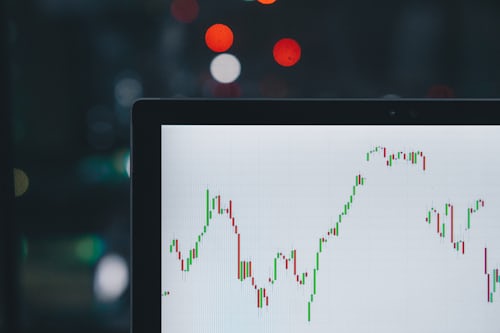|
Become a member

Like other methods of analysis, chart analysis attempts to forecast share prices for the benefit of investors at least to the extent that a statement can be made about the further development. The biggest difference to fundamental analysis is that business or economic ratios or sector analyses are completely ignored in chart analysis.
Hypotheses are decisive
Chart analysis is often equated with technical analysis. However, it can contain additional methods of market technical analysis and thus goes beyond the mere examination of price trends.
The analysis model of the chart technique is based on the hypothesis that the price development of e.g. shares forms certain similar repetitions. These, in turn, enable forecasts to be made of likely price developments.
US-American roots
The developer of the Dow Jones Index named after him, the American Charles Dow, is regarded in the Western world as a pioneer of technical analysis. However, the economic journalist never claimed to have developed a scientific theory that would be suitable for forecasting future prices of individual stocks.
Rather, Charles Dow saw his findings as a toolbox for stock analysts to define priority market trends more efficiently. The US publicist was of the opinion that financial markets behave cyclically and proceed in wave-like movements of varying duration.
Further development of the theory
In the 1930s and 1940s, the US mathematician Ralph Nelson Elliott built on Charles Dow's findings and created the theory of Elliott waves. Elliott's model also describes trend cycles in Exness login area, but they are much more mathematically defined than those of the Dow theory.
In his work "Technical Analysis and Stock Market Profits: A Course in Forecasting", Richard Schabacker published the first summary of the basis of chart analysis based on geometric patterns in 1932, which is still valid today.

Computers increase the importance of charting
With the increasing availability of computer technology since the 1980s, the importance of chart technique increased. For the first time, the mathematical as well as graphical processing of the data volumes necessary for chart analysis was quickly available. Thanks to computers, technical models can be calculated in real time and are used for transactions on the international financial markets.
Sense and Use of Chart Analysis
The technical chart analysis model assumes that there are recurring events, each with a similar future course. Unlike fundamental analysis, which examines balance sheets, evaluates news, examines a company's order situation or makes sector comparisons, chart technicians limit themselves to the price trend alone.
In this way, the goal is to determine buy or sell signals for certain stocks. The aim is to outperform the market. If the trader achieves a higher return than the underlying index, a satisfactory result has been achieved.
Chart technique more than a matter of faith
Chart analysts worldwide assume that the share price in the chart is the result of all expectations, hopes and actions. They believe that facts such as psychological factors or mass phenomena, such as fear or herd instinct, can be recognised in it.
In order to be able to make statements about further price developments, the chart technique compares historical price patterns with current ones, calculates a mathematically calculable probability for a certain scenario and constructs perspectives for further development.
|